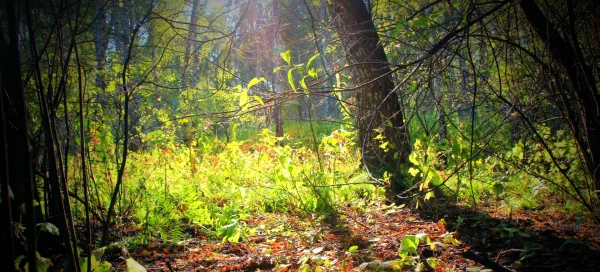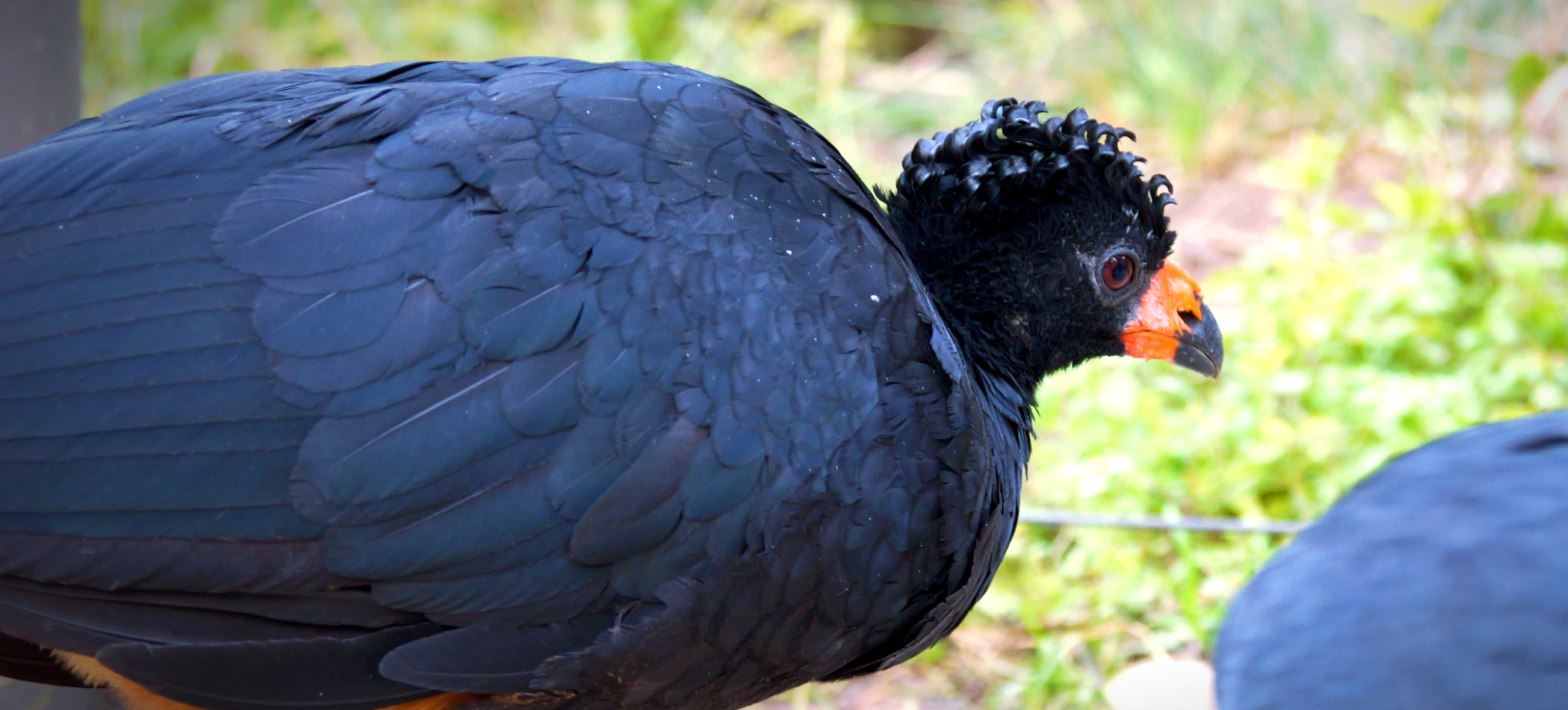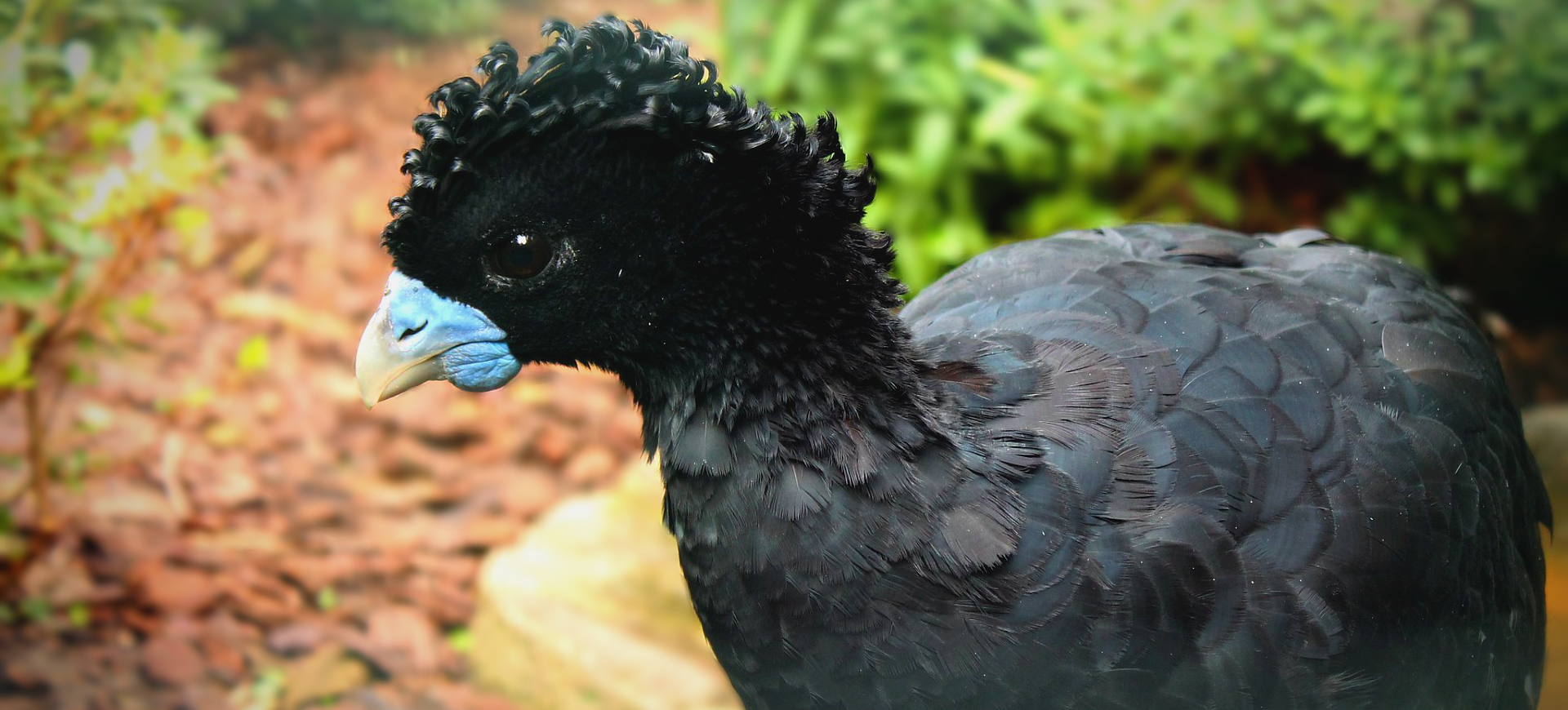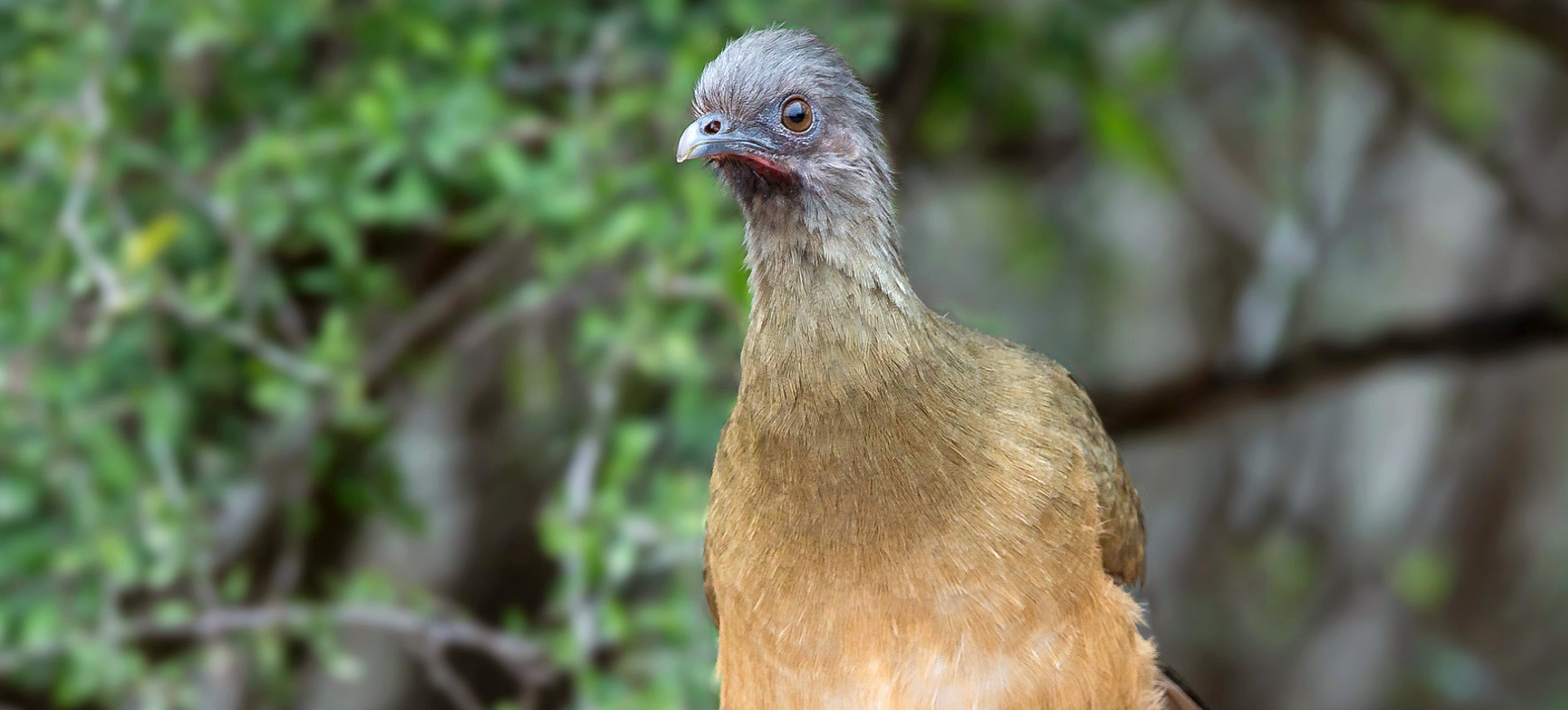Overview
The Helmeted Curassow, Pauxi pauxi, is a striking bird found primarily in the cloud forests of Venezuela and Colombia. This large bird is part of the Cracidae family and is known for its distinctive casque—a helmet-like structure on its head, which is more pronounced in males. The bird features predominantly black plumage with a white belly and blue facial skin, creating a striking contrast. The Helmeted Curassow is adapted to a life spent mostly on the forest floor, where it forages for food.
Due to its large size and terrestrial habits, the Helmeted Curassow is crucial in seed dispersal within its habitat. Its diet mainly consists of fruits, seeds, and small animals, which it forages from the ground. This bird is known for its loud, penetrating calls, which can be heard echoing through the forests, particularly during the breeding season. Despite its robust presence, it is elusive and prefers areas of dense vegetation away from human disturbances.
The Helmeted Curassow is currently facing significant threats from habitat loss and hunting. These pressures have led to a decline in population, making conservation efforts critical for survival. Protected areas and conservation programs focusing on habitat preservation and anti-poaching measures are essential to maintain the population of this unique bird and ensure its continued presence in South America’s cloud forests.
Taxonomy
Kingdom
Phylum
Class
Order
Family
Genus
Species
Sub Species
Type
Current distribution:
The Helmeted Curassow is found in a restricted range within the cloud forests along the Andean slopes of Venezuela and Colombia. Its distribution is fragmented due to habitat loss and degradation, leading to isolated populations that are increasingly vulnerable. The bird's presence in protected areas, where habitat preservation efforts are more concentrated, provides hope for survival.
Conservation efforts are crucial for reconnecting fragmented habitats and creating corridors that allow gene flow between isolated populations. Protecting these areas from further deforestation and degradation is essential for the long-term conservation of the Helmeted Curassow.
Physical Description:
The Helmeted Curassow is a robust and large bird, measuring up to 35 inches long and weighing around 6.6 to 11 pounds. Its most distinctive feature is the casque on top of its head, which varies in size between individuals but is generally more prominent in males. The bird ‘sage is predominantly glossy black, with a stark white belly and undertail, which adds to its distinctive appearance. The blue skin around its face contrasts sharply with its dark feathers, enhancing its striking visual presence.
This species has strong legs that are adapted for walking and scratching the forest floor for food. Its wings are relatively short and rounded, reflecting its mostly terrestrial lifestyle, although it can fly short distances, particularly when alarmed. The Helmeted CuraCurassow’srall morphology is well-suited to its life in dense forest environments, where agility and camouflage are key to survival.

Lifespan: Wild: ~14 Years || Captivity: ~20 Years

Weight: Male: 8-11 lbs (3.6-5 kg) || Female: 5.8-6.6 lbs (2.6-3 kg)

Length: Male: 35-39 in (89-99 cm) || Female: 31-35 in (79-89 cm)

Height: Male & Female: 30-39 in (76-99 cm)

Wingspan: Male & Female: 28-35 in (71-90 cm)
Characteristic:
Native Habitat:
The Helmeted Curassow is native to the cloud forests of the Andes in Venezuela and Colombia. These habitats are characterized by high humidity, dense vegetation, and a cooler climate, providing the ideal conditions for this species. The bird’s adaptation to this environment is evident in its feeding habits and physical characteristics, which are optimized for a life spent largely on the forest floor.
Conservation of these habitats is critical due to increasing deforestation and human encroachment threats. The preservation of cloud forests is not only important for the survival of the Helmeted Curassow but also for the many other species that depend on these ecosystems.
Biomes:
WWF Biomes:
Biogeographical Realms:
Continents:
Diet:
Diet & Feeding Habits:
The Helmeted Curassow’s diet is predominantly frugivorous, consisting largely of various fruits, nuts, and seeds in its forest habitat. Small animals, such as insects, frogs, and lizards, supplement this diet, providing the necessary protein for its large body. The bird uses its strong beak to break open fruit and its agile legs to scratch at the forest floor, uncovering hidden food sources.
This species plays a vital role in its ecosystem as a seed disperser. By consuming fruits and excreting the seeds over wide areas, it helps in the regeneration of its forest environment. The Helmeted Curassow’s feeding habits contribute significantly to the ecological health of its habitat, promoting forest diversity and resilience.
Mating Behavior:
Mating Description:
The Helmeted Curassow practices a monogamous mating system, where pairs remain together for multiple breeding seasons. During the breeding season, males perform various displays, including vocal calls and physical postures, to attract and maintain the bond with their mate. The construction of the nest is typically a joint effort, with both the male and female participating in building a platform in the trees or on a sheltered cliff ledge.
Eggs are usually laid in clutches of two to three, with both parents involved in incubation and the rearing of the chicks. The parental investment is high, ensuring that some of the offspring survive adulthood. This breeding strategy is closely tied to the availability of resources, which can vary seasonally in their mountainous habitats.
Reproduction Season:
Birth Type:
Pregnancy Duration:
Female Name:
Male Name:
Baby Name:
Social Structure Description:
Helmeted Curassows are generally solitary or found in pairs, especially during the breeding season. They may form small family groups or flocks during the non-breeding season when they are less territorial. This social behavior helps them optimize food gathering and protects against predators.
Understanding the social structure of Helmeted Curassows is important for developing effective conservation strategies. Their territorial behavior and the need for large tracts of undisturbed land highlight the importance of large-scale habitat conservation efforts.
Groups:
Conservation Status:
Population Trend:
The population of the Helmeted Curassow is critically endangered, with estimates suggesting fewer than 12,500 mature individuals remain in the wild. The primary causes for this decline are habitat loss, hunting, and the illegal pet trade. These factors have led to a fragmented distribution and decreasing numbers, placing the species at significant risk of extinction.
Conservation initiatives focused on habitat protection, anti-poaching measures, and community engagement are critical for reversing this species’ decline. Increasing public awareness and reducing hunting pressure are vital to conservation strategies.
Population Threats:
The Helmeted Curassow faces multiple threats, with habitat loss due to deforestation for agriculture and mining being the most severe. Additionally, hunting for meat and capture for the pet trade continue to reduce their numbers. The fragmentation of their habitat complicates their ability to find mates and access consistent food sources, further exacerbating the decline.
Effective conservation strategies must address these threats through comprehensive management plans that include habitat preservation, enforcement of hunting regulations, and community-based conservation programs.
Conservation Efforts:
Conservation efforts for the Helmeted Curassow include establishing protected areas and habitat restoration projects. These initiatives aim to safeguard remaining habitats and reconnect fragmented populations. Environmental education and local community involvement are also crucial, as they help build local support for conservation measures and reduce hunting pressure.
Given the cross-border nature of the bird’s habitat, international cooperation is necessary to enhance the effectiveness of conservation strategies. Ongoing research and monitoring are also needed to assess the impact of conservation efforts and adapt strategies as necessary to ensure the survival of the Helmeted Curassow.
Additional Resources:
Fun Facts
- Helmeted Curassows can be quite elusive, making them a rare sight even in areas where they are known to exist.
- Their distinctive casque grows throughout their life and is made of a fibrous material similar to keratin.
- They are excellent seed dispersers, playing a crucial role in maintaining the diversity and health of their forest ecosystems.
- The Helmeted Curassow’s deep, resonant calls are used to communicate over long distances in dense forests.
- Despite their size and seemingly clumsy build, they are capable of short bursts of flight, particularly when frightened.
- Conservation efforts for the Helmeted Curassow also benefit many other species that share their habitat, including numerous endemic and threatened species.
- They have a varied diet that allows them to adapt to seasonal changes in food availability within their cloud forest homes.
- Due to its vulnerability and charismatic appearance, the helmeted curassow is considered a flagship species for conservation in the Andean cloud forests.
- This bird’s reproductive rate is relatively low, which challenges population recovery efforts in the wild.
- The Helmeted Curassow is part of local folklore and culture in the regions where it is found. It is often seen as a symbol of the wild and untamed nature of cloud forests.










